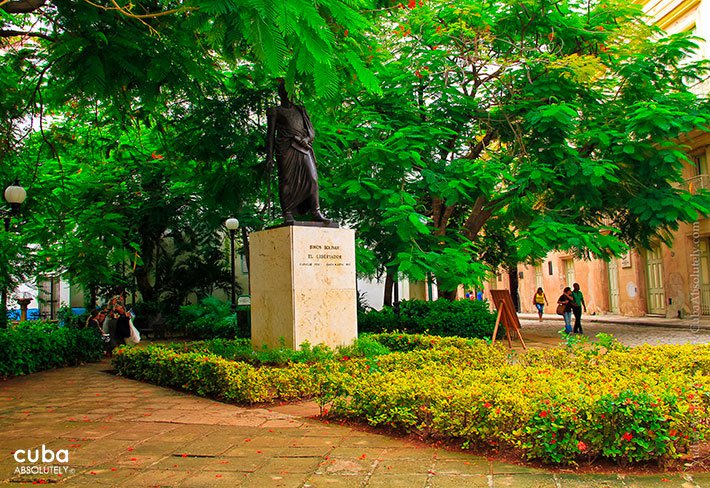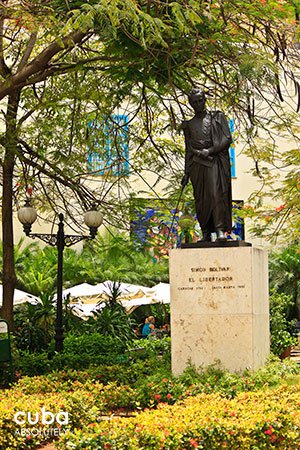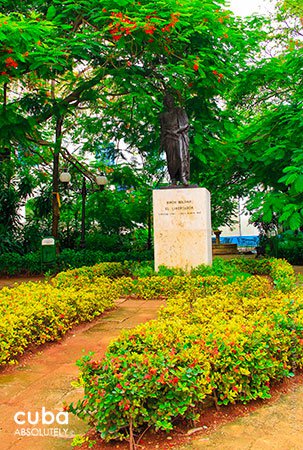North on Mercaderes, you’ll reach Parque Simón Bolívar on the corner of Calle Obrapía. In addition to a statue of the Latin American independence movement leader, the park has a ceramic mural by Venezuelan artist Carmen Montilla.

Fachada del Teatro Fausto LH  3
3
Built in 1915, it was reconstructed and remodeled in 1938 according to a project which was awarded the Gold Medal by the National Architects’ Association. Its pure Art Deco façade is faced with a mixt …
 Art DecoAdmission: NonePaseo de Martí (Prado) esquina a Colón
Art DecoAdmission: NonePaseo de Martí (Prado) esquina a Colón 
Hospital Hermanos Ameijeiras LH  3
3
The Hermanos Ameijeiras hospital opened on December 3, 1982. In the late 1950s the dictator Batista planned the construction of a new building for the National Bank of Cuba on the grounds where the Ho …
 Modern
Modern 
Casa de Dionisio Velasco LH  3
3
Built in 1912, the building was conceived as a grand palace. Lavishly ornamented on its facade, it features overhanging balconies and windows which break the horizontal line of the balustrade. This mo …
 EclecticAdmission: FreeCárcel #51 esq. a Zulueta, Habana Vieja
EclecticAdmission: FreeCárcel #51 esq. a Zulueta, Habana Vieja 
Edificio del Retiro Odontológico LH  3
3
In 1953, architect Antonio Quintana won the competition for the design of a building which would house doctors’ offices, stores and other public spaces. The use of brise-soleil, popularized by the Fre …
 ModernL entre 23 y 21
ModernL entre 23 y 21 
Calle San Lázaro LH  3
3
Stretching 14 blocks, this street takes its name from the San Lázaro Hospital built in 1746. It was s=successively renamed as Calle Ancha del Norte, Calle del Basurero, Avenida Antonio Maceo and Aveni …

Parroquia del Sagrado Corazón de Jesús (Parroquia del Vedado) LH  3
3
Built in 1892, this is Vedado’s oldest church; and is mostly known by its celebration of Corpus Christi in May, in addition to many other Catholic festivities. The wooden altar, pulpit and stained-gla …
 OtherOpen: 9am-5pm dailyLínea entre C y D
OtherOpen: 9am-5pm dailyLínea entre C y D 
Cruz Verde LH  3
3
The corner of Amargura and Mercaderes is known as Cruz Verde (Green Cross) due to a green-painted cross affixed to the northwest-facing cornerstone. The cross is one of twelve that were to be found al …

Castillo de San Salvador de la Punta LH  3
3
Given its strategic location on one side of the harbor mouth, this fortress was one of the two most important defensive constructions in Havana’s defense system in colonial times. Construction works t …
 RenaissanceAdmission: CUC 5; free under-12sOpen: 10am-6pm Wed-SunAvenida del Puerto y Paseo de Martí (Prado)
RenaissanceAdmission: CUC 5; free under-12sOpen: 10am-6pm Wed-SunAvenida del Puerto y Paseo de Martí (Prado) 
Fuente de los Leones LH  3
3
Designed in 1836 by Italian artist Giuseppe Gaggini, the Carrara marble Fuente del Conde de Villanueva is popularly known as “Fuente de los Leones” for its four lions, one to each corner, resting on p …

Oratorio de San Felipe Neri LH  3
3
Originally a small church built in 1693, it was acquired two centuries later by a bank. The building was eventually returned to the city as a concert hall where lyric theater and song is performed. It …



